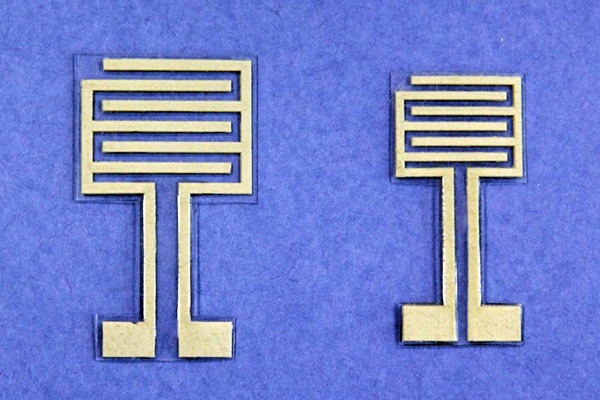31 January 2017. Engineers at North Carolina State University in Raleigh developed a hydration sensor worn on the skin and built into two low-cost prototype wearable systems. A team led led by electrical engineering professor John Muth and mechanical engineering professor Yong Zhu describes the device in the 27 January issue of the journal Advanced Healthcare Materials (paid subscription required).
Keeping the body hydrated is a key concern of athletes, first responders, and military personnel who face health problems from dehydration. But many current systems and devices that monitor hydration, say the authors, are large and expensive. “It’s difficult to measure a person’s hydration quantitatively,” says Muth in a university statement, “which is relevant for everyone from military personnel to athletes to firefighters, who are at risk of health problems related to heat stress when training or in the field.”
In this project, the team seeks to build a miniature and much less expensive hydration sensor that’s still easy to deploy, and can operate in real time. The researchers designed the sensor as a capacitor, a circuit with two electrodes that stores energy, but unlike a battery does not produce its own power. The sensor is built on a matrix of polydimethylsiloxane, or PDMS, a common, widely used biocompatible polymer found in a number of products and used more recently in fabricating biomedical micro-electromechanical systems.
The sensor’s circuitry uses silver nanoscale wires. When printed into a thin PDMS film, the sensor device is elastic and can conform to the shape of the skin where it’s placed. Electrodes in the sensor monitor electrical characteristics of the skin that correlate directly to a person’s hydration, and generate signals for readings on connected systems and devices.
The authors report the sensor records an individual’s hydration as accurately as larger and more expensive hydration monitors now on the market. And based on lab tests with a number of artificial skin surfaces with a range of hydration, the sensor provides accurate readings despite varying levels of humidity in the surrounding environment.
The researchers configured the sensor into two prototype applications. The first device is a skin patch worn on the chest that includes three electrocardiogram electrodes and a strain sensor, along with the hydration sensor. This device is designed to monitor a number of health factors, including hydration. The second device builds the sensor into a wrist band with a network analyzer chip, button cell battery, low-power microprocessor, and Bluetooth connectivity. Both prototypes can transmit their data to nearby mobile device or laptop.
“Our sensor costs about one dollar,” says first author and Ph.D. student Shanshan Yao, “and the overall manufacturing cost of the wearable systems we developed would be no more than a common wearable device, such as a Fitbit.” Yao adds, “The commercially available monitor we tested our system against costs more than $8,000.”
Read more:
- Wearable Health Devices Offer Early Disease Detection
- Wearable Device Senses Environment for Sight Impaired
- Smartphone System Shown to Control Blood Glucose Levels
- RTI, Validic to Boost Wearable Health Data Value
- Many Health Apps Found Not Helping People in Need
* * *


 RSS - Posts
RSS - Posts
You must be logged in to post a comment.